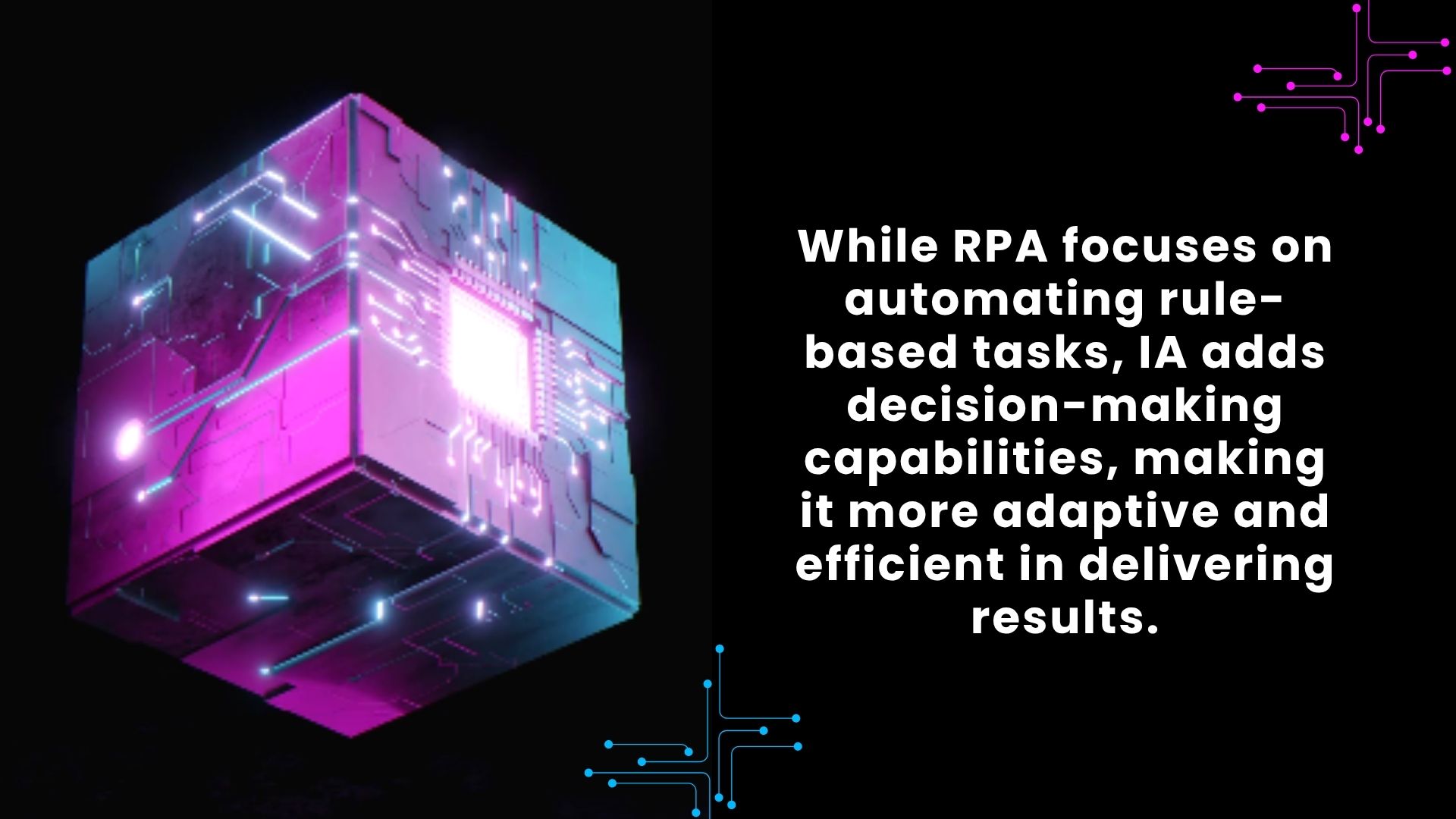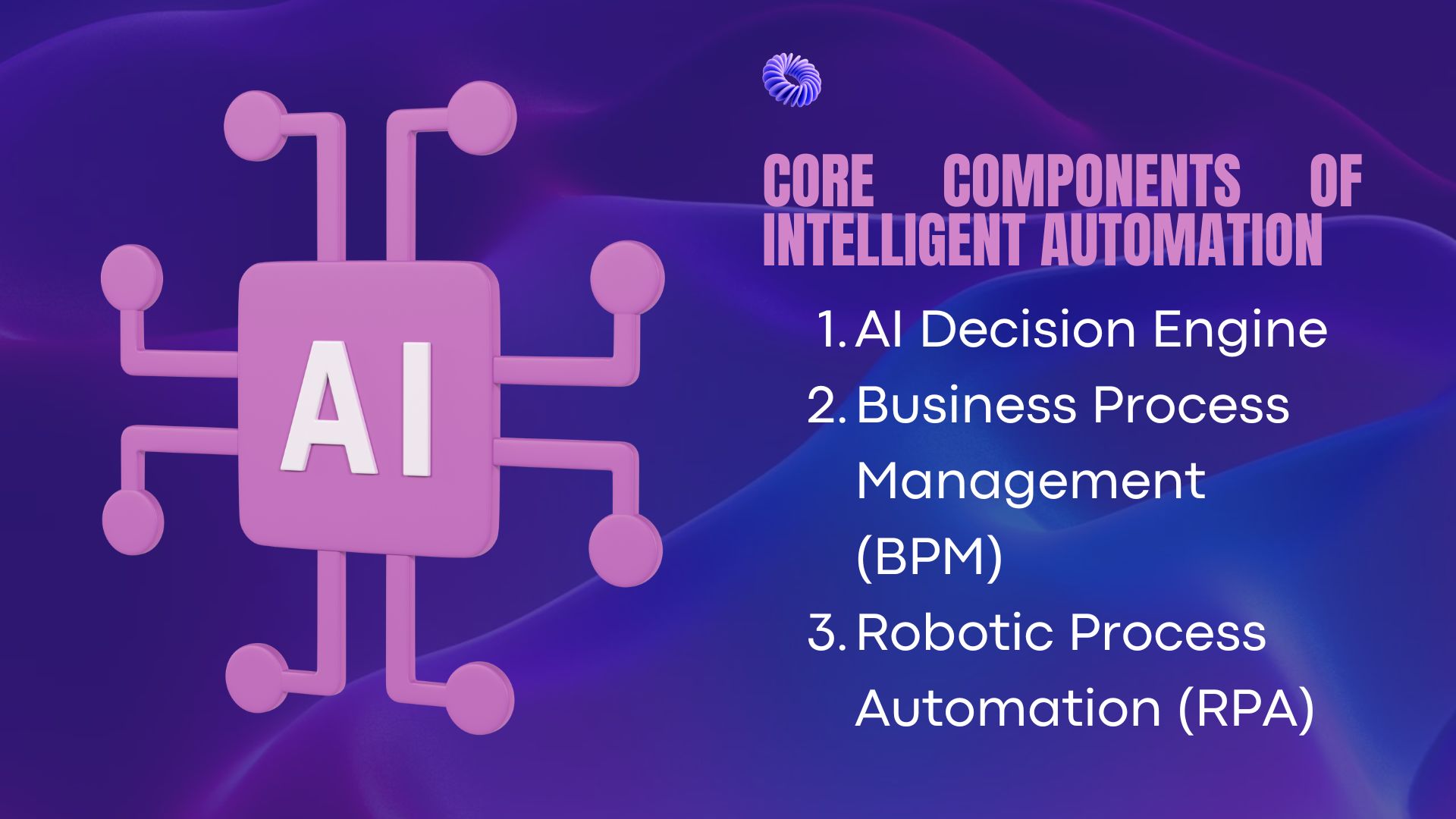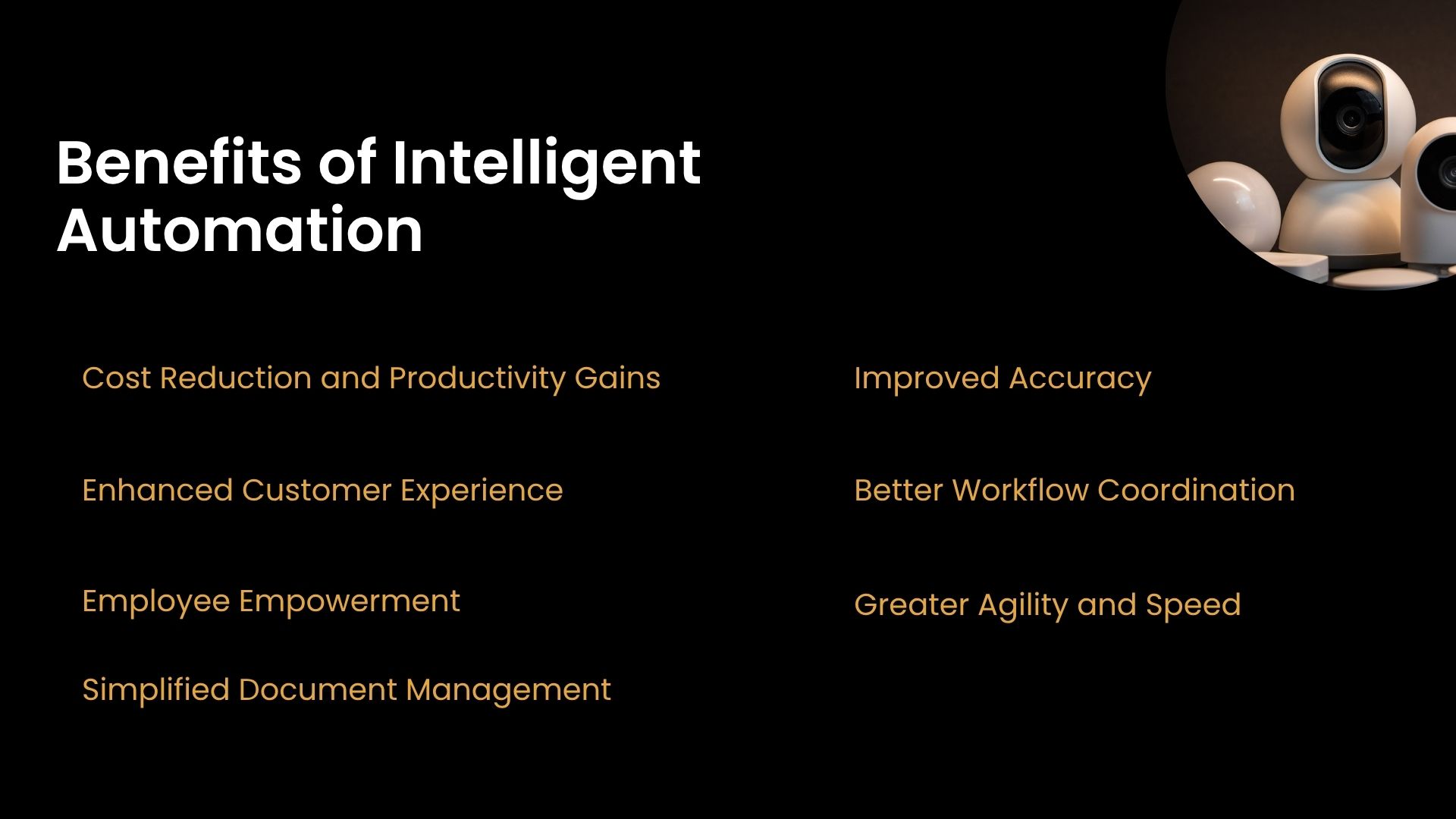
The Transformation Journey of Digitization to Intelligent Automation
Intelligent Automation (IA) is a powerful way to automate and improve how businesses operate. It brings together advanced technologies like Artificial Intelligence (AI) and Robotic Process Automation (RPA).
This technology uses machine learning to learn from data, make independent decisions, and constantly get better at performing tasks. IA can help businesses run smoother, cut costs, and give customers a better experience. Plus, IA can handle complex tasks that traditional RPA can’t, like understanding natural language and computer vision.
What Is Intelligent Automation Used For?
Intelligent Automation (IA) combines automation technologies, business process management (BPM), artificial intelligence (AI), and robotic process automation (RPA) to streamline operations and improve decision-making within organizations. It’s an important tool for businesses looking to grow and adapt, especially in today’s remote-work environment.
- IA helps organizations make faster, more informed decisions by automating complex processes and leveraging AI for insights.
- This frees up human resources by automating routine tasks, thus, allowing employees to focus on the higher-value activities. This leads to increased productivity and smoother workflows across various business functions.
- IA provides data-driven opportunities to improve customer interactions and overall satisfaction.
- Companies worldwide are adopting IA to support and augment their human workforce, creating a more efficient and capable digital environment.
- Particularly in the post-pandemic landscape with widespread remote work, IA has become essential for businesses to redefine how they operate and maintain competitiveness.
It’s important to note that Intelligent Automation goes beyond traditional Robotic Process Automation (RPA).

Core Components of Intelligent Automation
Intelligent Automation (IA) is powered by the synergy of three key technologies, each playing an important role in driving digital transformation-

1. AI Decision Engine
This is the most important component of Intelligent Automation. It uses machine learning and complex algorithms to analyze both structured and unstructured data. By doing so, businesses can develop robust knowledge bases and make predictive, data-driven decisions, moving beyond reactive measures to proactive strategies.
2. Business Process Management (BPM)
Often referred to as workflow automation, BPM focuses on continuous process reengineering. Its primary goal is to enhance time and cost efficiency within an organization. Modern BPM suites are essential for accelerating digital transformation initiatives and achieving overarching strategic business objectives.
3. Robotic Process Automation (RPA)
RPA excels at automating simple, repetitive tasks that, while seemingly minor, significantly contribute to overall business efficiency. When integrated with AI, RPA systems gain the ability to handle more complex tasks and adapt to a wider range of use cases. This frees up human employees to concentrate on strategic, value-added work that requires critical thinking and creativity.
Together, these three components form a powerful and transformative solution. They work in concert to simplify workflows, enhance operational efficiency, and ultimately, elevate the customer experience.
Benefits of Intelligent Automation
Intelligent Automation (IA) offers a powerful way for businesses to streamline operations and achieve significant improvements.

a. Cost Reduction and Productivity Gains
IA significantly boosts productivity while maintaining accuracy by automating systems and processes. This scalable technology allows for business optimization without increasing risk or overwhelming your staff, leading to notable cost reductions.
b. Improved Accuracy
IA drives consistent, data-driven processes that drastically reduce errors and enhance overall quality. Its AI-driven decision-making capabilities ensure repeatable and highly reliable outcomes.
c. Enhanced Customer Experience
Faster time-to-market, improved reliability, and higher-quality products are all direct results of IA. These improvements translate into better customer engagement and a distinct competitive advantage.
d. Better Workflow Coordination
When combined with Business Process Management (BPM) and Robotic Process Automation (RPA), IA facilitates seamless coordination among robots, human workers, and various systems, creating a more integrated and efficient workflow.
e. Employee Empowerment
IA frees employees from tedious, low-value tasks, allowing them to dedicate their time and skills to higher-impact responsibilities that truly leverage their expertise.
f. Greater Agility and Speed
Intelligent Automation accelerates data processing and empowers continuous process improvement, making your business more agile and responsive to changing demands.
g. Simplified Document Management
Automating document handling with IA reduces manual effort, increases processing speed, and significantly decreases the likelihood of human error, making document management far more efficient.
Applications of Intelligent Automation
Intelligent Automation (IA) and Artificial Intelligence (AI) are transforming nearly every industry by streamlining operations and enhancing efficiency.
- Automotive– AI empowers manufacturers to predict and adjust production schedules in real time, leading to more efficient procurement and significantly reducing manual workloads.
- Biotech & Life Sciences– In highly regulated areas like drug manufacturing, IA provides scalable, data-driven processes. A prime example of its power is how AI accelerated the development and testing of COVID-19 vaccines.
- Healthcare– Through Natural Language Processing (NLP), AI facilitates remote appointments and supports chatbot-assisted diagnostics, thereby minimizing the need for direct human intervention and speeding up patient care.
- Insurance– Intelligent automation automates important tasks such as claims processing, rate calculations, and document handling, all while ensuring adherence to regulatory compliance.
References
